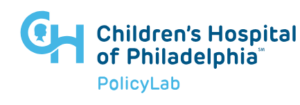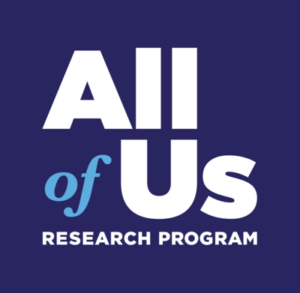- CMS: Medicare Program; Implementation of Prior Authorization for Select Services for the Wasteful and Inappropriate Services Reduction (WISeR) Model
- Public Inspection: CMS: Medicare Program: Implementation of Prior Authorization for Select Services for the Wasteful and Inappropriate Services Reduction Model
- CMS: Secretarial Comments on the CBE's (Battelle Memorial Institute) 2024 Activities: Report to Congress and the Secretary of the Department of Health and Human Services
- HHS: Patient Protection and Affordable Care Act: Marketplace Integrity and Affordability
- HRSA Announces Action to Lower Out-of-Pocket Costs for Life-Saving Medications at Health Centers Nationwide
- Public Inspection: HHS: Patient Protection and Affordable Care Act: Marketplace Integrity and Affordability
- Increased Risk of Cyber Threats Against Healthcare and Public Health Sector
- Eight Hospitals Selected for First Cohort of Rural Hospital Stabilization Program
- Announcing the 2030 Census Disclosure Avoidance Research Program
- CMS: Medicare Program; Hospital Inpatient Prospective Payment Systems for Acute Care Hospitals and the Long-Term Care Hospital Prospective Payment System and Policy Changes and Fiscal Year 2026 Rates; Requirements for Quality Programs; and Other Policy Changes; Correction
- CMS: Medicare Program; Hospital Inpatient Prospective Payment Systems for Acute Care Hospitals and the Long-Term Care Hospital Prospective Payment System and Policy Changes and Fiscal Year 2026 Rates; Requirements for Quality Programs; and Other Policy Changes; Correction
- CMS: Medicare and Medicaid Programs; Contract Year 2026 Policy and Technical Changes to the Medicare Advantage Program, Medicare Prescription Drug Benefit Program, Medicare Cost Plan Program, and Programs of All-Inclusive Care for the Elderly; Correction
- CMS: Medicare and Medicaid Programs; Contract Year 2026 Policy and Technical Changes to the Medicare Advantage Program, Medicare Prescription Drug Benefit Program, Medicare Cost Plan Program, and Programs of All-Inclusive Care for the Elderly; Correction
- CMS: Medicare Program; Prospective Payment System and Consolidated Billing for Skilled Nursing Facilities; Updates to the Quality Reporting Program for Federal Fiscal Year 2026
- CMS: Medicare Program; FY 2026 Hospice Wage Index and Payment Rate Update and Hospice Quality Reporting Program Requirements
USDA Invests in Rural Projects to Strengthen American Infrastructure, Create Good-Paying Jobs in 30 States

Funding Will Improve Access to a Clean, Reliable Electric Grid and Safe Drinking Water for Millions in Rural and Tribal Communities
U.S. Department of Agriculture (USDA) Deputy Secretary Xochitl Torres Small announced that USDA is investing in 116 projects across the nation to expand access to a clean and reliable electric grid, safe drinking water and good-paying jobs for people in rural and Tribal communities. Part of the funding announced today will make water infrastructure in rural areas more resilient to the impacts of climate change and severe weather.
The Department is investing $1.3 billion to support projects in 30 states. The investments advance President Biden’s Investing in America agenda to grow the American economy from the middle out and bottom up.
“Since day one, the Biden-Harris Administration and USDA have taken action to create good-paying jobs by making sure every community can benefit from safe drinking water and a reliable electric grid that lowers bills for hardworking families. Today’s $1.3 billion investment in over 100 rural water and electric infrastructure projects is a continuation of that commitment,” Deputy Secretary Torres Small said. “These projects will ensure that rural Americans have access to reliable, affordable energy and clean water no matter where they live. In the face of climate change, resilient power grids and strong water infrastructure are even more critical to building resilient rural communities and maintaining strong local economies.”
Strengthening Rural Water Infrastructure
During the event in Jeannette, Deputy Secretary Torres Small highlighted that Municipal Authority of Westmoreland County is receiving a $14 million loan under the Water and Waste Disposal Loans and Grants. Funding will be used to improve the City of Jeannette’s combined sewer system and eliminate the sanitary sewer overflows for the community.
In total, USDA is investing $443 million today through the Water and Waste Disposal Loans and Grants program to expand access to clean and reliable drinking water, sanitary waste disposal and storm water drainage for people in 24 states.
You can view the complete news release on our website.
CDC Study Released on Delayed Oral Health Care and Diabetes

The Centers for Disease Control and Prevention (CDC) published a new study showing that adults with diabetes are more likely to delay oral health care due to cost than adults without diabetes. This is the first study to provide national prevalence estimates of delayed oral health care due to cost among people with diabetes, and the first to describe the risk factors for delayed oral health care among people with diabetes. The study found that approximately 1 in 6 people with diabetes delay oral health care due to cost.
CMS Releases the Todd Graham SUPPORT Act Report

The Centers for Medicare & Medicaid Services (CMS) released the Dr. Todd Graham Pain Management Study, which reviews coverage options and addresses best practices for non-opioid treatments for acute and chronic pain management under Medicare. To view the report, visit: https://www.cms.gov/cms-behavioral-health-strategy
New Brief: The Role of Child Care in Family-centered Approaches to Treatment for Substance Use Disorder

Amid a persistent maternal mortality crisis in the United States, substance use is one of the most pronounced issues facing those who have recently given birth and other caregivers in Pennsylvania.
Interviews PolicyLab conducted with key stakeholders and caregivers in recovery across the Commonwealth, along with data and research by state and national entities, highlight the ways absence of quality child care prevents parents from accessing substance use treatment.
A new PolicyLab issue brief looks at how improving outcomes for pregnant and parenting individuals with substance use disorder (SUD) requires serving the whole family unit, explores the impact access to quality child care can have on a parent’s ability to access and sustain SUD treatment, and outlines potential ways to improve policy and practice.
While this resource presents a case study of this issue in Pennsylvania, the takeaways may be broadly applicable to other states seeking to build systems connections and support for caregivers in recovery.
New from ARC: New $9M Initiative to Grow Community Capacity

How will building community capacity help us strengthen Appalachia? 🌱
Many organizations serving the region do not have enough resources, or “capacity,” to plan, strategize or steer complex projects. Organizations often need training and funding to hire more staff, build organizational skills and expand services to create the greatest positive impact in their communities. 💚
That’s why we’re excited to announce the launch of READY Grants to Grow. This new $9M funding opportunity will award grants of up to $500K to organizations seeking to build individual, organizational or community capacity in Appalachia.
Any organization that is eligible to apply for an ARC grant is eligible to apply for READY Grants to Grow. Join us at a pre-application webinar on October 10 to learn more!
Public Comment Period Open for Pennsylvania Fair Contracting for Health Care Practitioners Act

As directed by the Fair Contracting for Health Care Practitioners Act (act), Act 74 of 2024, the Health Care Cost Containment Council (Council) has begun studying the prevalence and impact of non-compete agreements in the Commonwealth. The Council will be collecting public comments for analysis and inclusion within the final report. Comments received between September 21, 2024, and October 21, 2024, will be included for analysis.
Persons who wish to comment on the act may do so by contacting the Health Care Cost Containment Council
- Email: publiccomment@phc4.org
- Letter by Mail:
PA Health Care Cost Containment Council
225 Market St, Suite 400, Harrisburg, PA 17101
Thank you in advance for your consideration. If you have any questions, please feel free to contact Jake Muskovitz, PHC4’s project manager for the study: jmuskovitz@phc4.org.
45 Degrees North: Mind Your Manners In Rural Areas

People who travel overseas are usually advised to do a bit of research beforehand about how to behave there. Closer to home, though, they may be unintentionally obtuse about the etiquette of rural places they visit.
n the hospitality business it’s common knowledge that doctors and lawyers, judges and business executives like to cut loose where their professional colleagues, customers and constituents are unlikely to notice. And rural places, whether they’re across the country or across the county, are just the ticket.
My theory, for what it’s worth, is that people who’ve been trained to never take no for an answer in their day jobs forget that negotiation isn’t part of every interpersonal exchange.
Some people raise misbehaving to an art form worthy of lyrics in country songs. But mostly, it’s not worthy. Manners matter, even when you’re around people you think you’ll never see again. So here are things you might wish to know about how to behave in rural areas.
There’s a reason. For every sign posted in a rural area, there’s a reason. Sadly, though, there are always people who think they only apply to other people. Often, as they disregard a sign, they declare, “I’m only going to be here a minute.” And somehow they always seem to have missed childhood lessons about how long a minute is. So here’s one of the simplest rules of behavior in rural areas: Don’t block driveways, mailboxes, gates, dry hydrants or anything else marked by a sign.
People pay attention. Where there are fewer people and fewer vehicles on the roads, there’s not much anonymity. So you can assume folks note the make and model of unfamiliar vehicles. Recently, I stopped to visit with someone who told me about a pickup truck that’s been racing past his place. I’ve seen that truck and think it might belong to someone working a construction project nearby.
When a project is expected to take several months, an out-of-town work crew might find rental housing (good luck) or park a trailer somewhere. They might never actually meet the people who live on that narrow, curvy, hilly road – people who may be reluctant to flag down an unfamiliar vehicle to ask the driver to slow down. So visitors might want to know that rural populations skew older, and behave as if behind every window there’s someone with all the time in the world to take down license plate numbers, note patterns of activity, and call the sheriff.
Word gets around. I have to assume that misunderstood manners are why, in the city, Uber drivers get to review guests like guests review drivers. VRBO and AirBnB short-term rental hosts also get to review guests. But even when there’s no formal mechanism to record bad behavior, word gets around. When we hear a business owner mutter, “That guy’s as welcome as a fart in church,” we take note. It’s best to assume that people in a rural area all know each other, and the person behind the bar is texting her cousins about the unruly patron who might be headed their way after she invites the bad boy to leave. As a rule, it’s best to treat rural bartenders like tough mothers, regardless of gender.
Patience is a virtue. I know people with years of experience in the hospitality industry who will not work on Friday nights. Here in Wisconsin, that’s when people go out for fish fry. Here in the Northwoods, that’s also when people with cottages head north to relax after leaving more populated places with more restaurant options. I don’t know why some reality show doesn’t drop celebrities and CEOs into Northwoods taverns to work Friday fish fries (or maybe they have but I don’t watch those shows).
People skilled in other lines of work might not fully appreciate the careful preparation, teamwork and timing it takes to get fried fish orders through the line and out of the kitchen. People who know and love this culinary tradition just order a brandy old fashioned (sweet) and wait patiently for their food. Unless they see a large party with fussy children arguing with the wait staff about making 20 or 30 minor substitutions: Then locals take our orders to-go.
Planning is appreciated. In rural areas, it’s safe to assume that there are no simple solutions to supply problems nearby. So we try to plan ahead as much as possible. That includes not just restaurants but also volunteer fundraisers like fish boils and pancake breakfasts. An order of 50 meals to-go is most appreciated when we know in advance it’s coming. Then we can have sufficient containers on hand not just for that one order but for all the other folks who want carryout, and set up for food prep that doesn’t extend the wait time for people standing in line. The volunteers flipping flapjacks can’t make their griddles larger, or shorten the distance to town to send someone for more to-go boxes.
Make eye contact. This may be difficult to comprehend for people who spend most of their time trying to avoid making eye contact with strangers. But in rural areas, we actually look at each other when we talk. Pair that with a smile and folks will be treating you like family in no time. Add a friendly wave if you’re driving by. But don’t slow down unless there’s a deer in the ditch or you may seem creepy.
Language matters. In general, in rural places you can’t go wrong with please, thank you, and “may I ask…” Respectful questions are generally appreciated in both private homes (would you prefer I take off my shoes?) and in businesses (is it too close to closing time to order food?). Even respectful questions may not yield the hoped-for answer. Back when my husband and I owned a paddling school on a whitewater river, we said no to a lot of people who thought they should be able to rent a canoe or kayak – whether or not they knew how to paddle in whitewater rapids. Some of them seemed to think no meant talk louder using coarse language. The first time it happened to me, I asked the guy, “Would you speak that way if your mother was standing behind you?” He actually looked over his shoulder.
To avoid any misunderstanding, cussing at the person behind the counter is not good manners. Cussing where families are present (and by that I mean people of every age) – not good manners. Anybody on a ladder helping a neighbor get a fallen tree off a roof gets a free pass on language. But otherwise, watch your mouth. Anything else I might have to add can be best expressed by Wisconsin musicians Pete and Lou Berryman in their song, A Chat With Your Mother:
I can’t control how you young people
Talk to one another,
But I don’t want to hear you use
That F word with your mother.
Once you hear that sung to the accordion, it’ll be with you forever.
Pennsylvania Broadband Program Program Guidelines Now Available!
In June 2023, Pennsylvania was awarded over $1.16 billion in funding through the National Telecommunications and Information Administration’s (NTIA) Broadband Equity, Access, and Deployment (BEAD) Program. As a next step in implementing this historic investment, the PBDA Board of Directors recently approved guidelines that detail the requirements to participate in the program.
Pennsylvania’s BEAD Program Guidelines will be posted for at least 30 days prior to PBDA beginning to accept applications. Additionally, the PBDA is aware that other states have, or will, implement a pre-qualification process for potential applicants interested in applying for BEAD funding. However, the PBDA has determined that it will not require pre-qualification in advance of accepting applications.
Lastly, the PBDA has updated the Pennsylvania Broadband Map to include Broadband Serviceable Areas (BSAs) eligible under the PBDA BEAD Program. You can find a CSV file and other pertinent information, to include Program Webinars and upcoming Office Hours details, on the PBDA BEAD Program website.
All of Us Expands Its Rural Reach

The NIH’s All of Us national population health program is increasing its rural presence.
Where you live affects how you feel. Because everything around you contributes to your health. That includes the food you eat, the places where you spend your days, and the air you breathe. Or how far you live from medical care.
That is a central idea of the All of Us Research Program. Enrolling people from different backgrounds and neighborhoods is the key to precision medicine.
People who live in rural areas have unique experiences to share. All of Us already has more than 70,000 participants who live in rural areas. That’s about 9% of our participants. But 20% of people in the United States live in rural areas. So we know we can do more.
The Heartland Consortium is a new group of All of Us enrollment partners in four Midwestern states. The group came together last year and is already enrolling people in All of Us.
To learn more about All of Us, click here.
A Few Rural Towns Are Bucking the Trend and Building New Hospitals

There’s a new morning ritual in Pinedale, Wyoming, a town of about 2,000 nestled against the Wind River Mountains.
Friends and neighbors in the oil- and gas-rich community “take their morning coffee and pull up” to watch workers building the county’s first hospital, said Kari DeWitt, the project’s public relations director.
“I think it’s just gratitude,” DeWitt said.
Sublette County is the only one in Wyoming — where counties span thousands of square miles — without a hospital. The 10-bed, 40,000-square-foot hospital, with a similarly sized attached long-term care facility, is slated to open by the summer of 2025.
DeWitt, who also is executive director of the Sublette County Health Foundation, has an office at the town’s health clinic with a window view of the construction.
Pinedale’s residents have good reason to be excited. New full-service hospitals with inpatient beds are rare in rural America, where declining population has spurred decades of downsizing and closures. Yet, a few communities in Wyoming and others in Kansas and Georgia are defying the trend.
“To be honest with you, it even seems strange to me,” said Wyoming Hospital Association President Eric Boley. Small rural “hospitals are really struggling all across the country,” he said.
